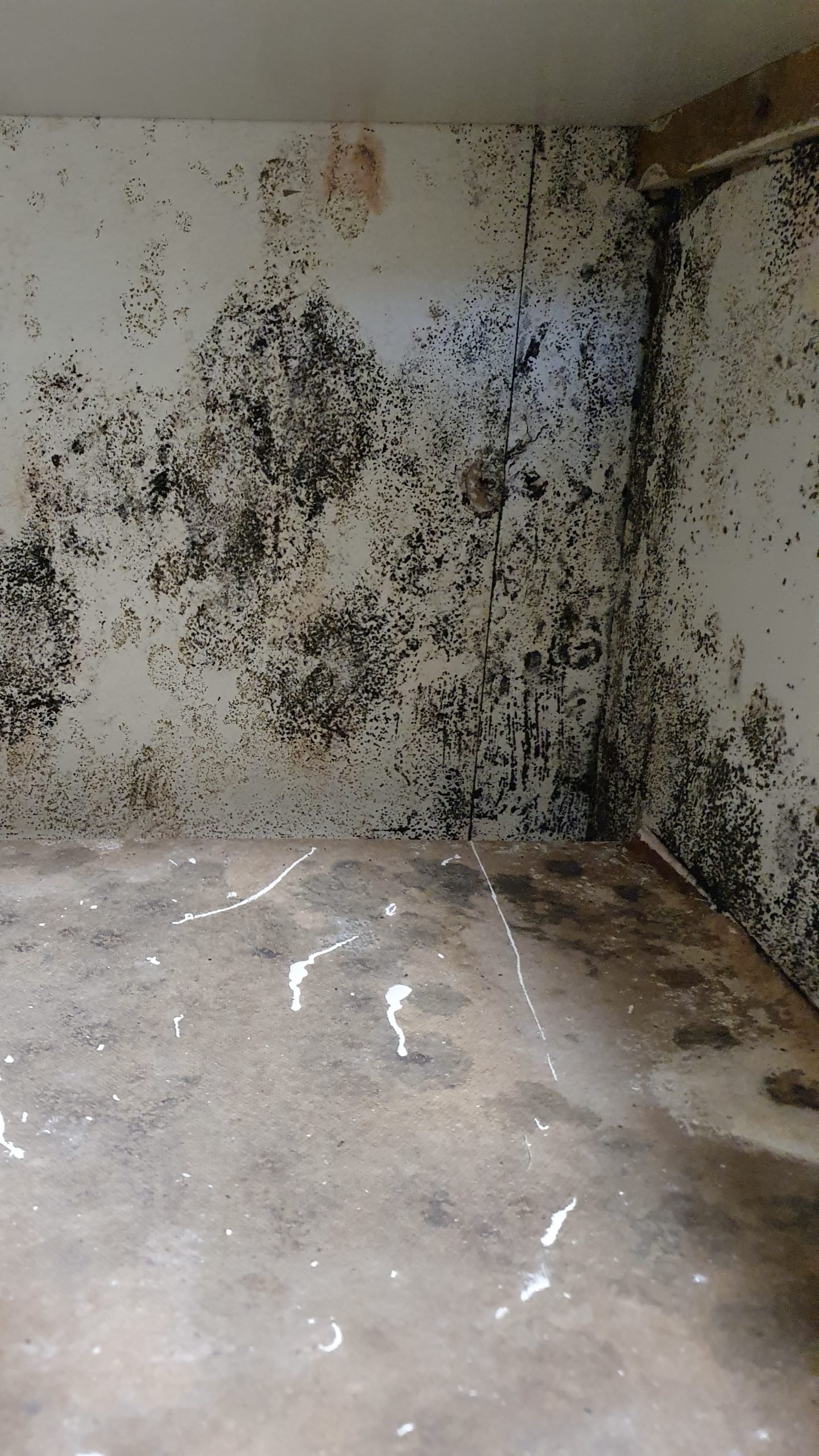Buying or selling a property can be a stressful experience; one of the most arduous someone can go through. What can make the whole process even worse is coming to discover all kinds of property care issues that you weren’t aware of before you signed the contract.
Below, you will be able to read about the property care issues you need to look out for when buying a home.
What are the most common property care issues that need resolving?
So, if it’s your first time looking for a property and you are unfamiliar with some of the different property care issues that you may be faced with, here is a quick run down of the most common problems that we encounter on our pre-purchase surveys.
Damp
Damp refers to the presence of moisture, water and condensation being present within a property.
Problems with damp in your property can easily occur without any warning signs and can cause serious damage to your building’s infrastructure if left. When looking for damp in your property, there are a number of signs that you can spot, such as a damp musty smell, black spot mould, or in extreme cases, dry rot and wet rot growth.
Rising damp is a process whereby moisture contained within the ground travels vertically through the capillaries of a structure, which is referred to as ‘capillary action’. Properties built after 1875 are likely to contain an original damp-proof course (slate, bitumen etc.), however, if a damp-proof course has either failed or has been compromised i.e. bridged, then rising damp can occur.
As water rises from the ground, salts that are naturally contained within the earth (mainly chloride and nitrate salts) can be transmitted in solution. When this rises to a certain point, evaporation naturally occurs, leaving the aforementioned salts within the plasterwork and brickwork.
Chloride and nitrate salts are known to be ‘hygroscopic’ meaning they are able to attract moisture from the atmosphere which in turn, can cause staining and deterioration to a finished surface.
Secondly, you have penetrating damp. Penetrating damp is the process of moisture being built up horizontally through the external walls of the building into the property.
Often misdiagnosed as rising damp, penetrating damp can lead to further, more serious issues, such as wood rot, increased heat loss, frost damage into masonry and unsightly water damage on both the outside and inside of the property.
Penetrating damp can affect any type of property, however, old properties that have had no or little property maintenance are more prone to water penetration. Modern properties can also suffer from penetrating dampness if the design and workmanship of the property have defected, resulting in having damp in walls.
Condensation is caused when warm, damp air (humidity) is released into the atmosphere of our homes and is unable to disperse outside.
This normally happens because lack of ventilation in the property allows this water-laden air to come into contact with cold surfaces such as windows and walls, where it will condense and release the moisture it holds onto that wall or other surface.
Affecting an estimated one in five UK properties, condensation is the most common cause of damp problems in our homes.
Damp is a nasty and common problem found in all different kinds of properties on the market, both before and after they are sold.
Woodworm
Woodworm is exactly what it sounds like – a type of insect devoted to burrowing within and eating your timber from the inside out. Despite what the name suggests, the insect is not in fact a worm. Woodworm are actually beetles, which means that once they have reached maturity and change from larvae to beetle, they can spread from one piece of timber to another, compromising any timber within the property itself.
There are four main species of wood boring beetle affecting properties in the UK. These are the Common Furniture Beetle (Anobium Puncatum), Death Watch Beetle (Xestobium Rufovillosum), Wood Boring Weevil (Pentarthum Huttoni or Europhryum Confine) and the House Longhorn Beetle (Hylotrupes Bajulus), each preferring different sorts of timber,
What makes woodworm so tricky is that they can appear dormant or invisible for a very long time, because they are only active in the warmer months of the year. This means that to the untrained eye, a property that appears stable and clean, might start to display the tell-tale signs of woodworm once the weather starts to warm.
The best time to spot them is between the months of May – September (this is known as the flight season). Although quite a broad time-scale, this is when woodworm is most likely to leave the timber in an attempt to mate.
One of the first places you will notice an infestation may not actually be on the wood itself. As woodworm fly to a source of light, it is common to find them near the proximity of your window and window sills. It is there that you will be able to see the woodworm beetle crawling.
Rot
Wet rot and dry rot might sound similar, but they are actually quite different in both cause, appearance and behaviour. The key thing to remember is that rot is a property care issue that might not always be immediately visible.
Dry rot is a term used to describe a very specific and unique type of wood rot (Serpula Lacrymans). However, despite its common name, it will generally only attack damp timber.
It is the most serious form of timber decay. It is a brown rot that typically occurs on wood embedded in, or in contact with, wet masonry. It is sensitive to heat and light and, therefore, is rarely found on exposed external timbers. It has the ability to transport moisture from damp areas to dry timbers, thus, promoting the spread of the outbreak, especially in unventilated areas.
Typically, the timber has deep cracks, both along and across the grain. There is also a distinctive, mushroom smell when dry rot is prevalent.
It is a serious problem across properties in the UK. For an infection to be initiated, there needs to be a spore (or some growth that is already present), oxygen, a suitable temperature, a susceptible food source and water, all of which are to be found in buildings.
Wet rot describes a group of wood-destroying fungi (Basidimoycetes) that attack the cellulose or lignin in timber, leaving it brittle and weak. Both brown rot and white rot are types of wet rot, with the exception of Serpula Lacrymans – also known as dry rot.
Wet rots generally thrive on a higher timber moisture content than dry rot, but do not spread through the masonry, and fungus growth stops when the moisture is removed.
The most common type is Coniophora Puteana (cellar fungus). Other species include Fibropporia Vaillantii (mine fungus) and Phellinus spp.
Simply put, wet rot and dry rot are both very common property care issues, but they aren’t always the easiest things to discover if you are just walking through a property in the hopes of buying. All of this begs the question then; how can you discover property care issues in a property you don’t own, and how many of these property care issues should be disclosed before purchase?
Should property care issues be disclosed by the seller?
When it comes to putting a property on the market, the rule is that any known property care issues are made available to the potential buyer. So, if there is a known property care issue with say, damp, this needs to be disclosed during the selling process.
However, a major problem is that sometimes property care issues can’t be disclosed because they haven’t been discovered. This isn’t down to anyone in particular, as someone cannot disclose what they do not know.
That isn’t to say these issues won’t, or can’t be discovered. As anyone familiar with the purchasing process knows, mortgage lenders will often require a survey to be done on the property in question before the sale and mortgage can be agreed.
These surveys are often great at discovering a wide variety of different elements present in a property, but, we should point out that they aren’t property care specific. That means that if you want a comprehensive, property care specific survey, you will need to engage one yourself.
This usually isn’t a problem at all, and the surveys can be done in tandem, or to complement each other if the general mortgage survey finds that further investigation is needed because of a suspicion of damp being made clear in the original findings.
All this means is that once your pre purchase survey is complete, you are going to have all of the information on the property ready available to you – with the results, obviously, open to your exploration and future choices.
Of course, the inverse is true as well. If you are looking to sell, and you have a survey conducted which turns up the presence of woodworm, damp, or dry rot, then these property care issues will need to be made available to the purchaser.
How do I arrange a pre-purchase survey?
The process of having a survey carried out on a property you are interested in buying is incredibly simple. Just get in touch with our team, and we can make all of the necessary arrangements to have our surveyor visit and inspect the property in question.
Don’t worry about our survey conflicting with any other surveys, either. Our findings are backed by the Property Care Association (PCA), and they can be relied upon when it comes to further negotiation, or if you have to make an informed decision on whether the property is still something you want to pursue.
You can read more on our pre purchase survey page here, or you can call 0800 955 7445 and speak to our team about arranging a survey on a property you are interested in purchasing.

